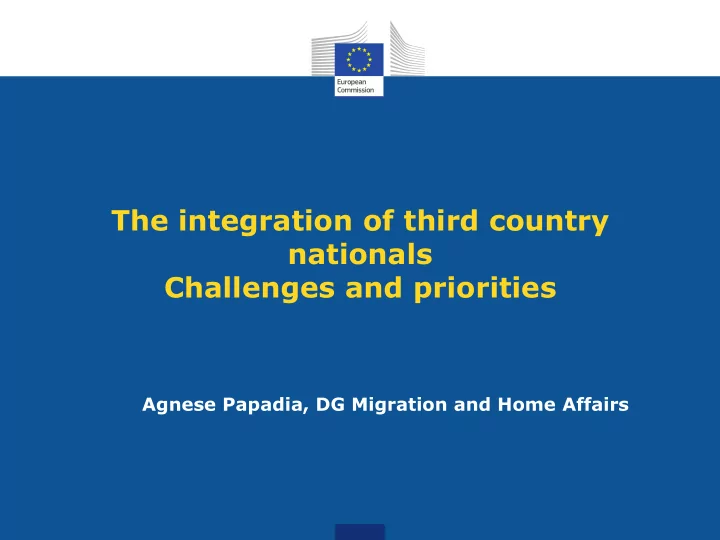

The integration of third country nationals Challenges and priorities Agnese Papadia, DG Migration and Home Affairs
Integration: why do we need to act?
The numbers 20 million third country nationals in the EU 4% of total population Migration reasons: Family reunification Work Studies/research International protection
The numbers In 2015: high influx of asylum seekers 1,321,600 asylum applications 307,620 positive asylum decisions
The challenges A lower education level compared with host country nationals
The challenges A lower employment rate, in particular for women
Why do we need to act? Integration: a challenge and an opportunity Cost of non-integration Building more prosperous and cohesive societies
Integration: a key role for cities Migrants are more likely to live in (large) cities More than 60% of refugees worldwide live in urban areas Cities are places where migrants and non-migrants interact, be it through working, studying, living or raising their families The local dimension is the core of both the challenges and the solutions to address integration bottlenecks.
EU Action in the field of integration Common basic principles on integration Urban Agenda partnership on the inclusion of migrants and refugees Funding Exchanges of good practices European website on integration
Action plan on the Integration of third- country nationals Identifies five priority areas: 1. Pre-departure/ pre arrival 2. Education 3. Labour market integration and access to vocational training 4. Access to basic services: health and housing 5. Active participation and social inclusion Horizontal issues: gender, vulnerable groups (e. g. unaccompanied minors) and coordination between actors
Successful approaches Strategies that look at the same time at the short term and long term challenges and solutions Integrated approaches coordinating different policy areas and administrations Engagement of civil society as well as local businesses Promoting integration as a two-way process
Thank you! • For more information and successful practices on integration you can visit the European Website on Integration: • www.integration.eu
Recommend
More recommend